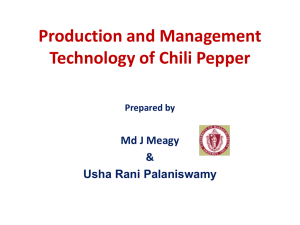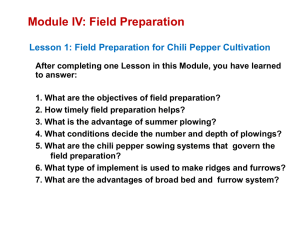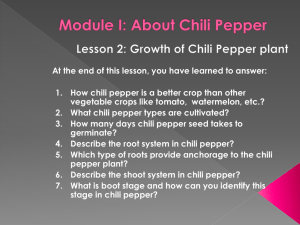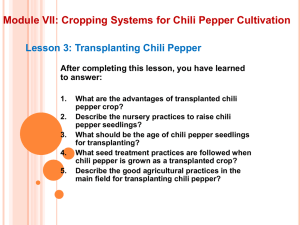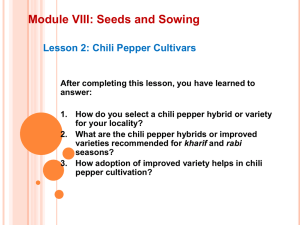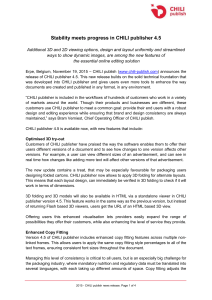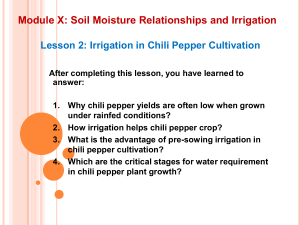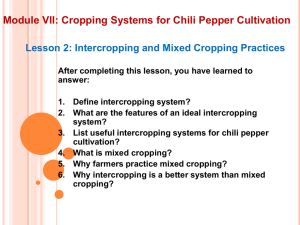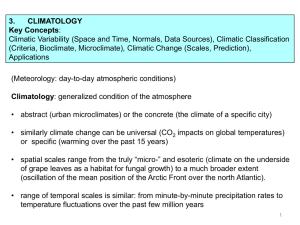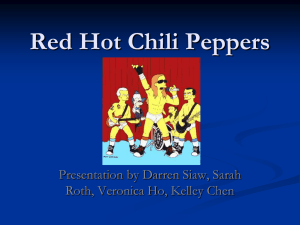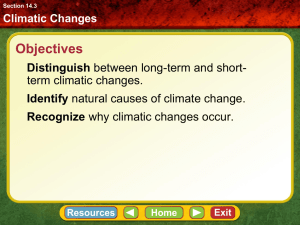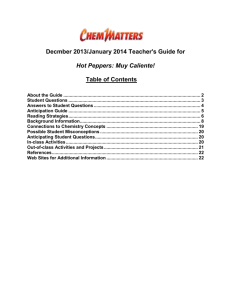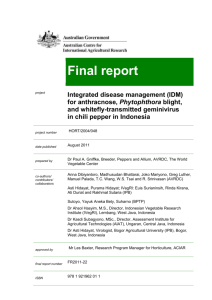Module III: Soil and Climatic Requirements
advertisement
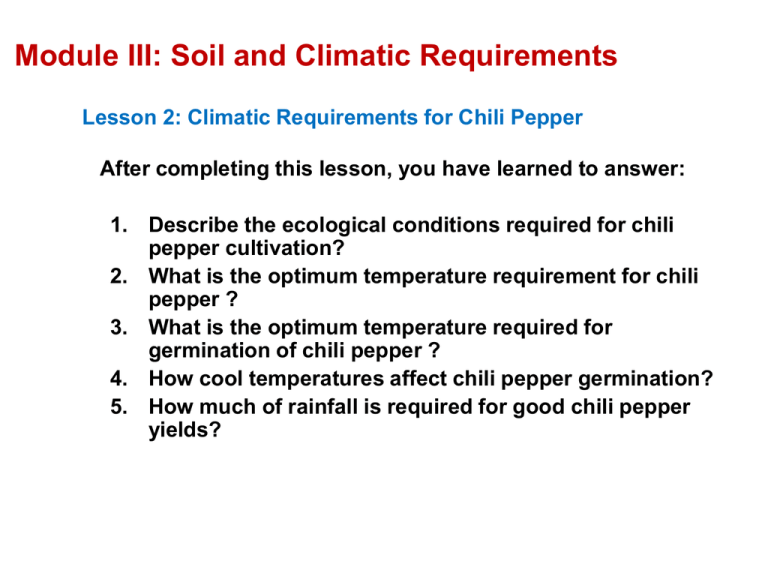
Module III: Soil and Climatic Requirements Lesson 2: Climatic Requirements for Chili Pepper After completing this lesson, you have learned to answer: 1. Describe the ecological conditions required for chili pepper cultivation? 2. What is the optimum temperature requirement for chili pepper ? 3. What is the optimum temperature required for germination of chili pepper ? 4. How cool temperatures affect chili pepper germination? 5. How much of rainfall is required for good chili pepper yields? Module III: Soil and Climatic Requirements Lesson 2: Climatic Requirements for Chili Pepper Chili pepper can grow in a wide range of ecological conditions and can still yield well even under unfavorable conditions of drought stress and high temperatures. Red dots indicate chili pepper growing environment Peppers are frost-intolerant warmweather annuals that grow best at 70 to 80 degrees F temperatures. Peppers have less cold tolerance than tomatoes, although more than eggplants. Module III: Soil and Climatic Requirements Lesson 2: Climatic Requirements for Chili Pepper Temperatures below 59 degrees F during ripening reduce capsaicin content and fruit will not set at night temperatures below 60 degrees F. Peppers have more drought tolerance in terms of plant survival than either tomatoes or eggplants, but will abort young fruit at high temperatures (> 80 degrees F day or 70 degrees F night) and low humidity even if adequate soil moisture is present. Module III: Soil and Climatic Requirements Lesson 2: Climatic Requirements for Chili Pepper Chili pepper requires warm conditions but it can be grown under a wide range of conditions. It is also widely grown in temperate regions and at altitudes of up to 2300 m in the tropics. It can tolerate cold temperature throughout its life cycle better than any other crop. Module III: Soil and Climatic Requirements Lesson 2: Climatic Requirements for Chili Pepper Flowers must be pollinated within 24 to 30 hours of opening, so 1 to 2 days of hot, dry conditions can result in lower fruit set, especially on bell types. Flowers can also be lost at high temperatures. Fruits from early flowers are usually large and have greater red color content at maturity. Fruits do not set when mean temperatures are below 60oF or above 90oF. However, flowers drop when night temperatures are above 75oF. Fruit set may be stalled if temperatures rise above 90oF after several flowers have set and fruits are developing. Module III: Soil and Climatic Requirements Lesson 2: Climatic Requirements for Chili Pepper Chile is a shallow-rooted crop and needs 4 to 5 acre-feet of water between planting and harvest. Up to 70% of the water absorbed by full-canopy chili is removed from the top 1 foot of soil. Irrigation volume varies with the amount of plant foliage, wind, sunlight, temperature fluctuation and relative humidity. Apply water on a 5- to 7-day schedule between late June and July, before summer rains begin.

